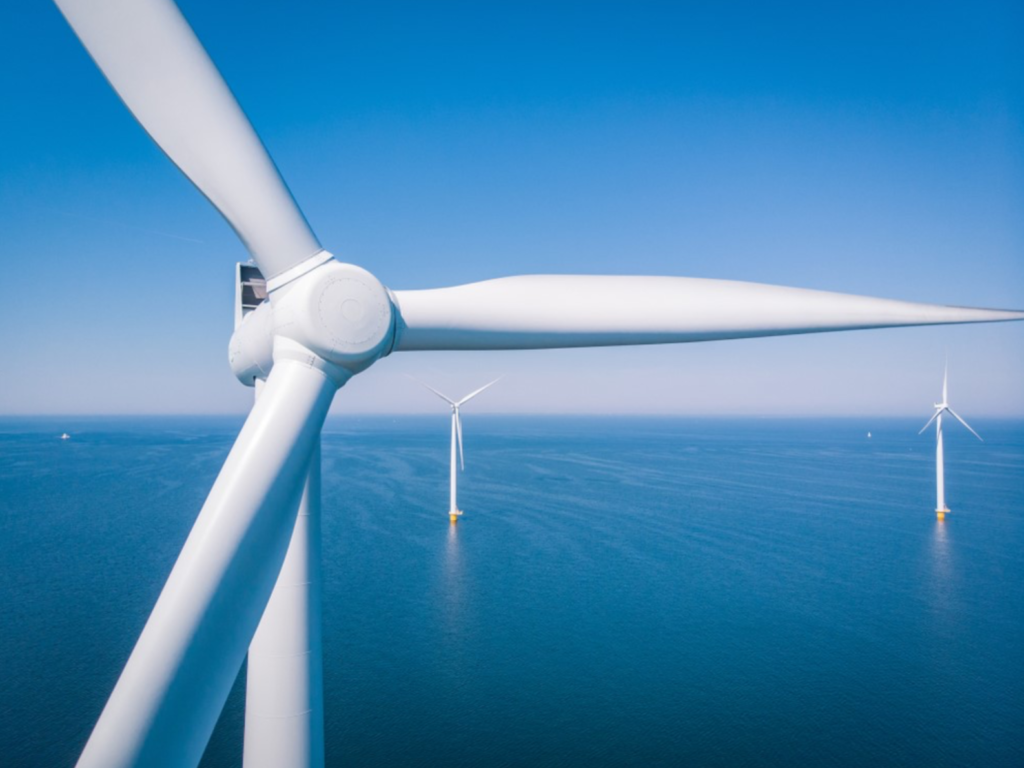
© Shutterstock/ Fokke Baarssen
Courtesy of SeafoodNews.com
Plans are in the wind for greater offshore wind goals off California: The state wants to generate enough electricity to power almost double the number of homes currently established in California.
The California Energy Commission last week released its plan with goals of 5 gigawatts of offshore wind by 2030 and 25 GW by 2045 – enough electricity to power 3.75 million homes and 25 million homes, respectively. Further, it would mean roughly 2,000 turbines in the ocean off California, creating more closed areas for commercial fishermen and potential unknown effects to the ocean environment.
According to the 2020 census, California’s 40 million population accounts for 14.21 million homes. If those figures hold or grow only incrementally over the next 25 or so years, most of California’s energy needs will be met solely by offshore wind, one of the currently most expensive sources of renewable energy.
“These ambitious yet achievable goals are an important signal of how committed California is to bringing the offshore wind industry to our state,” CEC Chair David Hochschild said in a press release. “This remarkable resource will generate clean electricity around the clock and help us transition away from fossil fuel-based energy as quickly as possible while ensuring grid reliability.”
California is home to some of the best offshore wind resources in the country, a power source that can play a major role in helping the state achieve 100 percent clean electricity and carbon neutrality, the CEC said. Offshore wind is a critical clean energy source at night complementing solar energy by providing generation at the end of the day and into the evening as the sun sets.
The CEC developed the report in coordination with federal, state and local agencies and stakeholders including Tribal governments, fisheries and other ocean users, the agency said in the statement. It is the first of several products the CEC must prepare to create a strategic plan for offshore wind energy development as required by Assembly Bill 525. It reflects the latest available research on technical potential.
“We appreciate the CEC’s careful deliberation,” Pacific Coast Federation of Fishermen’s Associations spokesman Mike Conroy said in an email. “We are encouraged that the thoughtful approach to the 2030 planning goals will not necessitate identification of additional Call Areas off the California Coast.”
CEC staff will next study the economic benefits of offshore wind in relation to seaport investments and workforce development needs. Staff will also create a roadmap to develop a permitting process for offshore wind energy facilities and associated electricity and transmission infrastructure. The entire plan must be submitted to the Legislature by June 2023.
Plans for renovations to prepare for offshore wind activities are already under way at the Port of Humboldt Bay with $10.5 million in funding approved by the CEC earlier this year. Governor Gavin Newsom’s 2022–23 budget proposal builds on this effort and proposes an additional $45 million for other needed upgrades at waterfront facilities.
Earlier this week, the Humboldt Bay Harbor, Recreation and Conservation District directed its offshore wind subcommittee to explore a project labor agreement with local unions. The District is eyeing federal funding to develop a heavy lift marine terminal to support the offshore wind industry and having a PLA in place now would help leverage both state and federal funding. President Biden issued an executive order in February that required PLAs be in place for projects that receive more than $35 million in federal funding; commission members said they plan to apply for a port infrastructure development grant by May 2023 in excess of $50 million for the heavy lift marine terminal.
At the same time, the seafood industry remains wary. Offshore wind could have potential impacts to the marine environment and ecosystem, critical and important habitats, the commercial and recreational fisheries and dependent fishing communities, domestic food security, etc., Conroy said.
“We hope to get a better understanding of the potential impacts identified above as the Morro Bay and Humboldt wind energy areas are developed and become operational,” he added. “As Californians, we expect that a thoughtful and measured approach to future offshore wind will be done responsibly and based on informed decisions. At present, there are no industrial floating offshore wind facilities operating anywhere in the world. We should not allow any new developments until we have gained sufficient knowledge, experience and science, based on non-modeled observations and datasets, from operational floating offshore wind facilities.”
